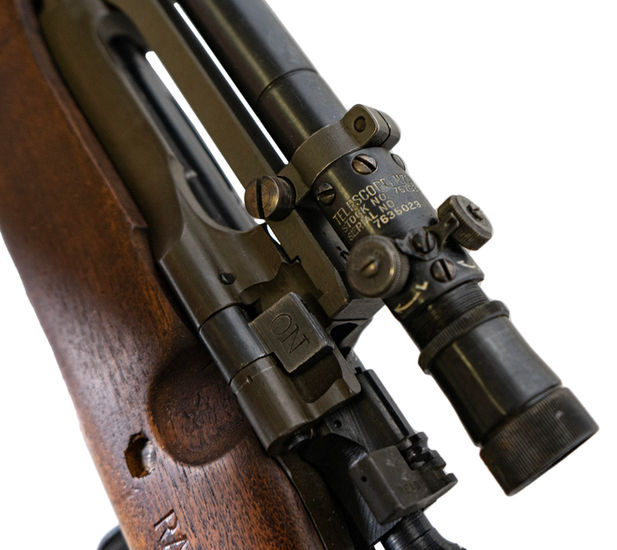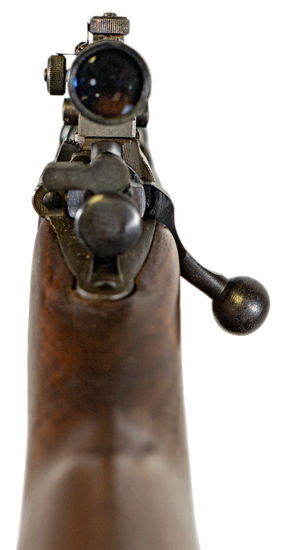Springfield M1903A4
description
INFO
The origins of the Springfield 1903 rifle can be traced back to the early 20th century when the U.S. military recognized the necessity for an improved bolt-action rifle to replace the aging Krag-Jørgensen rifles. In 1901, a board of Army officers led by Colonel William Crozier began examining various rifle designs. Ultimately, a modified version of the Mauser action was chosen, incorporating features from the German Gewehr 98.
Production of the Springfield 1903 began at the Springfield Armory in Massachusetts in 1903, hence the rifle's name. The gun's design was robust, featuring a five-round internal magazine, a bolt-action mechanism, and a barrel length of 24 inches. It fired the powerful .30-06 Springfield cartridge, which provided excellent accuracy and stopping power at extended ranges. After World War I, the Springfield 1903 underwent several modifications to enhance its effectiveness. The original straight stock was replaced with an improved pistol-grip stock, and the barrel was shortened to 24 inches. These changes resulted in the development of the Springfield 1903A3, which became the standard issue rifle for U.S. soldiers during World War II. But was eventually replaced by the M1 Garand.
During World War II, the Springfield 1903A3 saw action in both the European and Pacific theaters. American soldiers relied on its accuracy and durability during crucial battles, including the Normandy landings, the Battle of the Bulge, and the Pacific island-hopping campaign.
The Springfield 1903 rifle possessed a range of features that contributed to its esteemed reputation as a reliable and accurate firearm. Its bolt-action mechanism. Firing the potent .30-06 Springfield cartridge, the rifle delivered exceptional accuracy, long-range effectiveness, and stopping power. Equipped with a five-round internal magazine, the Springfield 1903 allowed for quick reloading using stripper clips. Its adjustable iron sights enabled precise aiming, while the ergonomic pistol-grip stock in later variants enhanced handling and control. The 24-inch barrel struck a balance between maneuverability and accuracy. Constructed with a robust steel receiver and walnut stock, the rifle boasted durability under challenging field conditions. Additionally, its compatibility with a bayonet added versatility for close-quarters combat. Some rifles like this one were equipped with a M73B1 telescopic sight. This scope was a 2.2x magnification optic manufactured by the Springfield Armory.
Origin: United States
Manufactured: 1942
Manufacturer: Springfield Armory
Type: Bolt-Action Rifle
Caliber: .30-03 or .30-06 Springfield
Barrel Length: 610mm (24")
Action: Bolt-Action
Magazine Capacity: 5 Round Stripper Clips




















